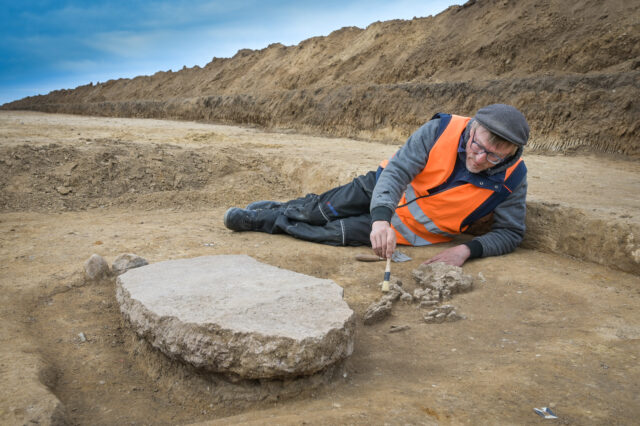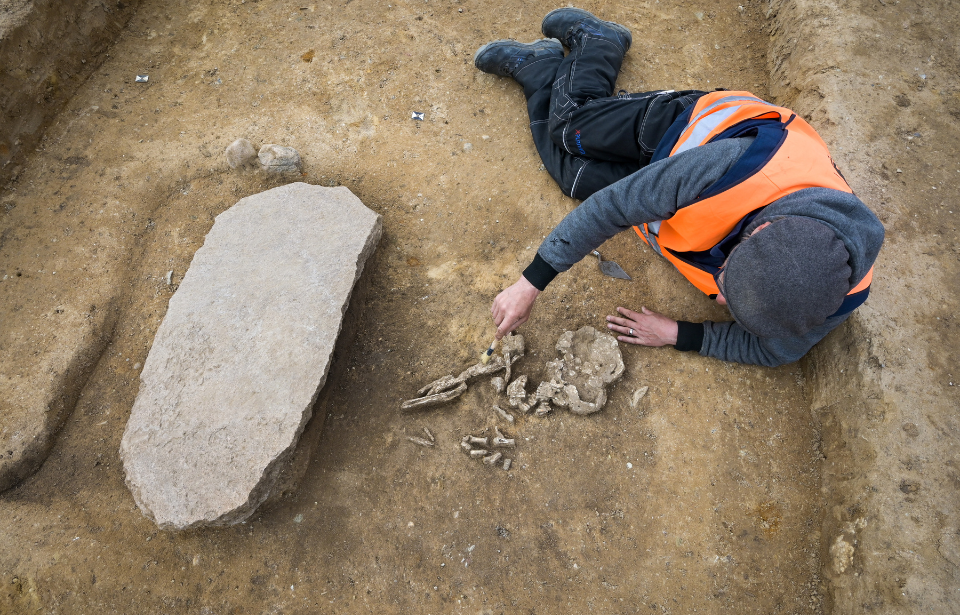The fear of zombies has been felt for millennia. While the idea of the living dead may have looked different in the past compared to the idea we have today, the main point has remained constant: humans fear the dead rising up. Now, archaeologists have discovered a grave that showcases just how these ancient people tried to deal with this fear.
A “zombie” grave was discovered

The State Office for Heritage Management and Archaeology of Saxony-Anhalt revealed on Facebook that they made an incredible discovery. During a rescue excavation in Oppin, Germany, that was held prior to planned construction work for an energy infrastructure project, archaeologists unearthed a grave. This wasn’t just any grave, though. It appears to be a “revenant” grave, also known as a “zombie” grave.
Revenant graves have been discovered in the past and showcase that people have long feared the deceased coming back to life. These graves were special in that specific efforts would be employed to ensure that the dead stay dead. While most revenant graves have been found across Europe dating to the Middle Ages, there have been a handful found to date back to prehistoric times.
It is believed to date to the Bell Beaker culture period

Although the grave still hasn’t been conclusively dated, researchers believe it dates to the Bell Beaker culture period. This culture was present around the Neolithic period and the start of the Early Bronze Age, and the grave having been found near other cultural discoveries suggests it dates to that same time frame. Currently, there is little recorded about the Bell Beaker culture, but this find has the potential to provide more information as to the superstitions of the people of that period.
“We know that already in the Stone Age people were afraid of revenants,” explained Susanne Friederich, an archaeologist with the state office and project manager for the excavations. “Back then, people believed that dead people sometimes tried to free themselves from their graves. Sometimes, the dead were laid on their stomachs. If the dead lies on his stomach, he burrows deeper and deeper instead of reaching the surface.”
Keeping the “zombie” down

One of the dead giveaways (pun intended) that this grave was a revenant grave was the presence of an oversized stone on the remains of the deceased. The grave belonged to a middle-aged man who died between the ages of 40 and 60, was buried some 4,200 years ago, and was laid in a crouched position on his side. Strikingly, the stone was placed atop his legs, pinning him in place.
The stone was over three feet long and around a foot and a half wide, and was four inches thick, meaning this was a pretty hefty weight to place on the body. The statement from the state office explained that “It must be assumed that the stone was placed there for a reason. Possibly to hold the dead in the grave and prevent it from coming back.”
More from us: AI Helps Scholars Decipher A 2,000-Year-Old Scroll Destroyed by Mount Vesuvius
Some revenant graves also employed the use of lances plunged through the torso to secure the body in place. However, the massive stone seemed to satisfy the grave maker, as no lance was found at this particular site.
Ready to go on a timeless adventure? Subscribe to The Vintage Newsletter now! Join us in exploring the captivating tapestry of history, where every click reveals a new chapter in the story of humanity. Don’t just read history – experience it firsthand. Sign up today and let the past come alive in your inbox!
